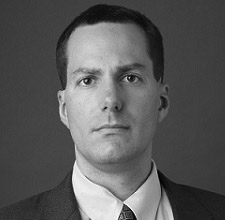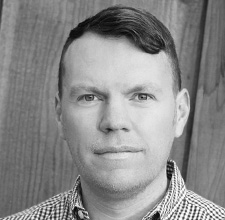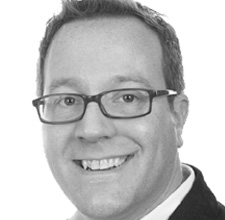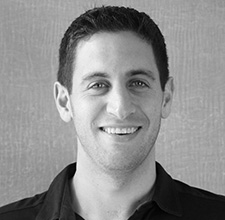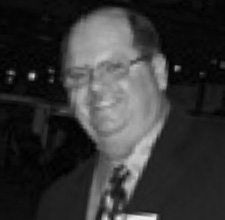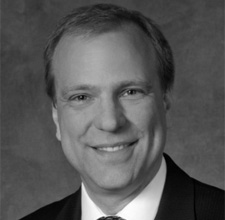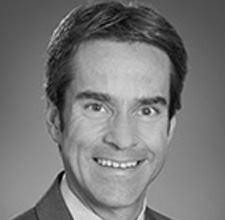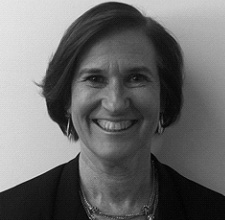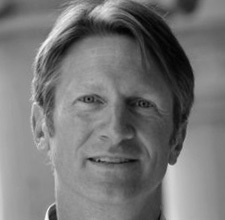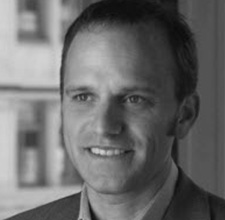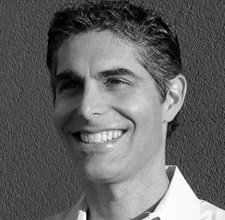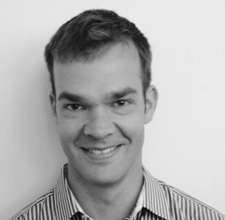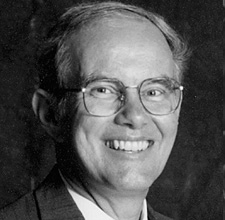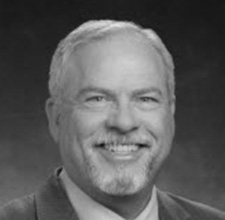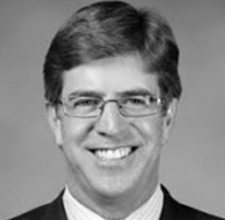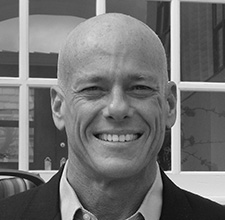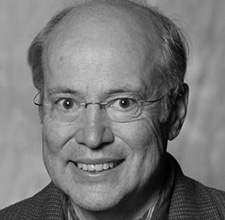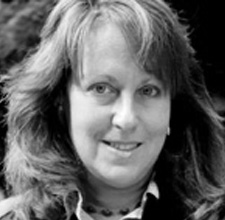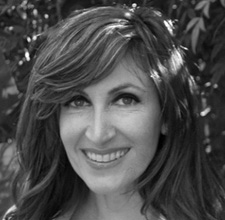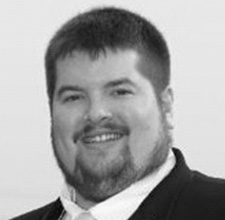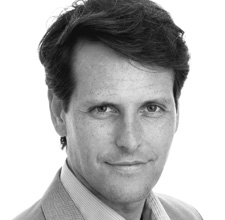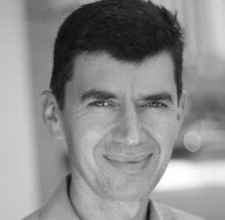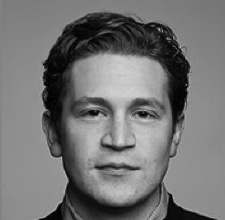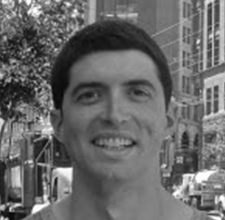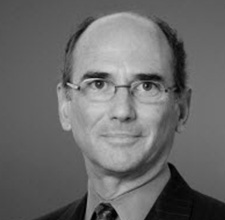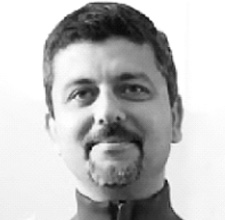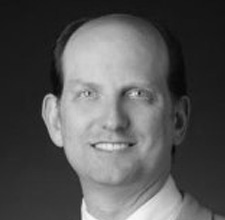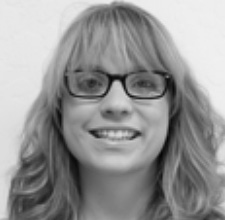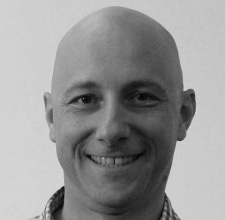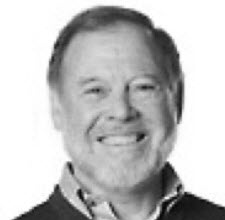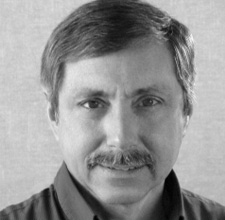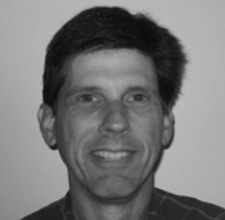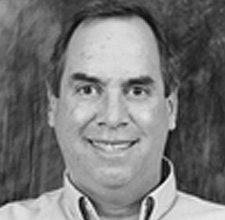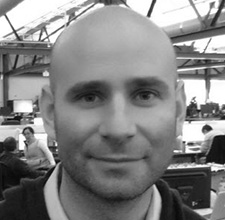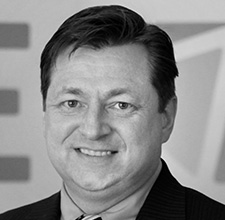Schedule
AT A GLANCE
Day 1 – Mon, Oct. 20th
Day 2 – Tue, Oct. 21st
Day 3 – Wed, Oct. 22nd
Day 1 - Monday, October 20 2014
Registration
10:00AM - 6:00PM
Local Industry Tours
10:00AM - 4:00PM
Locations Vary
Networking Cocktail Hour
5:00PM - 6:00PM
Market Foyer, Level 3
Opening Night Reception
7:00PM - 9:30PM
The Exploratorium*
*Transportation to/from Exploratorium will be provided.
Shuttles will depart hotel @ 6:15PM sharp.
Shuttles will depart hotel @ 6:15PM sharp.
Day 2 - Tuesday, October 21 2014
Breakfast
8:00AM - 9:00AM
Cyril Magnin Foyer & Market
Welcome Address
9:00AM - 9:30AM
Cyril Magnin Ballroom
Keynote with Alberto Savoia
9:30AM - 10:30AM
Cyril Magnin Ballroom
Plenary Session with J. Andrew McAllister and Alex Laskey
10:45AM - 12:00PM
Cyril Magnin Ballroom
Lunch
12:00PM - 1:00PM
Market and Embarcadero
Breakout Sessions
1:15PM - 5:15PM
Various - Parc 55 Hotel
Networking Cocktail Hour
5:00PM - 6:00PM
Expo Foyer - Parc 55 Hotel
Day 3 - Wednesday, October 22 2014
Breakfast
8:00AM - 9:00AM
Cyril Magnin Foyer & Market
Keynote with Peter Leyden
9:00AM - 10:30AM
Cyril Magnin Ballroom
Breakout Sessions & Pitch Panel
10:45AM - 11:45AM/12:00PM
Various - Parc 55 Hotel
Lunch
12:00PM - 1:00PM
Market and Embarcadero
Breakout Sessions
1:15PM - 4:00PM
Various - Parc 55 Hotel
Departures
4:00PM
Registration Open
10:00AM
Local Industry Tours
10:00AM - 04:00PM
CEC Informal Session
04:00PM - 05:00PM
Exhibitor Cocktail Hour @ Parc 55 Hotel
5:00PM - 06:00PM
Opening Night Reception @ Exploratorium
07:00PM - 09:30PM
Welcome Address
9:00AM - 9:30AM
Keynote with Alberto Savoia
9:30AM - 10:30AM
Plenary Session with J. Andrew McAllister and Alex Laskey
10:45AM - 12:00PM
Lunch and Transition
12:00PM - 1:15PM
Breakout Sessions
1:15PM - 2:30PM
Transition
2:30PM - 2:45PM
Breakout Sessions
2:45PM - 3:45PM
Transition
3:45PM - 4:00PM
Breakout Sessions
4:00PM - 5:00/5:15PM
Cocktail Hour
Industry Dinners
Keynote with Peter Leyden
9:00AM - 10:30AM
Breakout Sessions
10:45AM - 11:45AM
Entrepreneurs at Bat
Lunch & Transition
11:45AM - 1:15PM
Breakout Sessions
1:15PM - 2:30PM
Transition
2:30PM - 2:45PM
Breakout Sessions
2:45PM - 3:45/4:00PM
Departures
4:00PM
Program Details
Click arrows to view session details.
INNOVATIVE CUSTOMER ENGAGEMENT STRATEGIES

Employing intelligent technology, social sciences, and data insights to influence and mobilize energy consumers:
Deeply engaging and activating customers in today’s media-rich world requires leveraging all the tools in our toolbox
including technology, data, behavioral and social sciences and media. This track will highlight how these all come together
to help us reach our aggressive climate goals by inspiring consumers to eliminate unnecessary energy use.
The Role of Media and Storytelling in Evangelizing Emerging Technologies
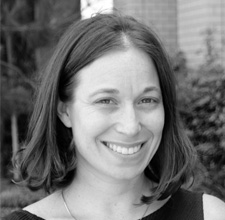
Wednesday, October 22nd | 10:45am - 11:45am
Leveraging emerging technologies for behavior change requires that they not only convey data but tell stories that motivate consumers to take action.
Additionally, the stories we tell about emerging technologies impact the way they are viewed and adopted. This session will discuss the role of media
and storytelling in emerging technologies and provide insights on how to integrate them into programs.
Moderator

Beth Karlin
UC Irvine
UC Irvine
Mobilizing the Switch
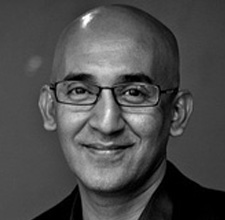
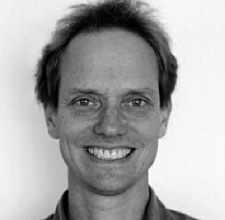
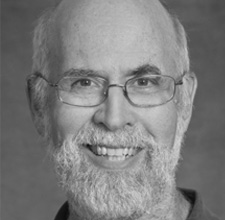
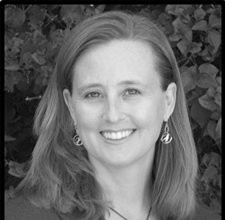
Wednesday, October 22nd | 1:15pm – 2:30pm
This session reviews the behavioral and social science facets to foster active partners and deeply engage customers.
The focus is on translating behavior change research into consumer action, as well as leveraging partnerships to create
a lasting energy efficiency culture.
Speakers

Banny Banerjee
Stanford Design School
Stanford Design School

John Petersen
Oberlin College
Oberlin College

Rick Diamond
Lawrence Berkeley National Lab
Lawrence Berkeley National Lab
Moderator

Kat Donnelly
Empower Efficiency
Empower Efficiency
Data Innovation for Customer Engagement
Tuesday, October 21st | 4:00pm – 5:15pm
To keep up with increasing customer expectations, innovations long deployed in the private sector are becoming common-place for
traditional industries bringing with them new questions on privacy, confidentiality and security. This session will engage experts
from diverse fields, to discuss best practices and lessons learned on effective customer engagement.
Technologies
Data Analytics
OVERCOMING MARKET AND TECHNOLOGY BARRIERS

Can we move to market faster, with greater success? This track explores the roles of various emerging technologies
participants, programs, innovative market transformation approaches, and opportunities to improve how we overcome barriers.
From entrepreneur to utility to customer, improvement opportunities abound.
Who’s on First? Understanding the Players and Their Roles in Helping Emerging Technologies Transition
Tuesday, October 21st | 2:45pm – 3:45pm
Who are all of the participants necessary for making an emerging technology (ET) a success, and what are their perspectives?
A discussion between and about the players (installers, distributors, consumers, entrepreneurs, investors, utilities) including their roles,
risk profiles, motivations, and decision points relative to ET. Can we improve alignment to enable ET?
Technologies
Entrepreneurship
Let’s Just Put It In Code... Understanding and Planning for the Pathway from Emerging Technology to Codes & Standards
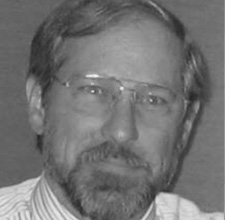
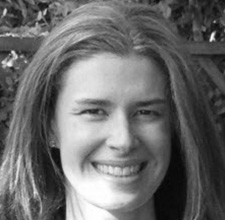

Tuesday, October 21st | 4:00pm – 5:00pm
What are the advantages and disadvantages when technologies and measures move from Emerging Technologies Programs directly to
Codes and Standards? Discuss the value of ET programs in enabling market transformation, its role in technology vetting, understanding
market barriers, and preparing the market. Learn how planning the pathway to codes and standards can improve market transformation programs.
Speakers

Charlie Stephens
Northwest Energy Efficiency Alliance
Northwest Energy Efficiency Alliance

Paula Gruendling
California Public Utilities Commission
California Public Utilities Commission

Paul Doppel
Mitsubishi
Mitsubishi
Technologies
Policy
It Works, Now What? Innovative Approaches for Accelerating Market Transformation
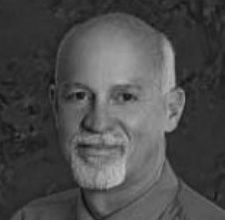




Wednesday, October 22nd | 2:45pm – 4:00pm
After an emerging technologies demonstration is complete, a technology is 'ready' and meets technical claims, success is often still just out of reach.
This session explores innovative approaches to market transformation programs to overcome market barriers. Actively trade ideas with industry leaders on
ways we can collectively bridge this valley of death.
Speakers

Danny Miller
Transformative Wave
Transformative Wave

Eric Haugaard
CREE Lighting
CREE Lighting

Jeff Harris
Northwest Energy Efficiency Alliance
Northwest Energy Efficiency Alliance

Dave Bisbee
Sacramento Municipal Utility District
Sacramento Municipal Utility District
Moderator

Terrance Pang
Energy Solutions
Energy Solutions
Move Faster!... Be Patient!... Venture Capital and Emerging Technologies Programs Meet in the Middle




Wednesday, October 22nd | 1:15pm – 2:30pm
A 360° Review of Emerging Technologies (ET) Programs, technology financiers and Venture Capital; how can each improve
in their respective roles in enabling ET? What innovative financing approaches can help bridge the gap to achieve market transformation?
Come join this open discussion between ET Program Managers, emerging technology providers, financiers, and Venture Capitalists on a more successful collaboration.
Speakers

Cole Hershkowitz
Chai Energy
Chai Energy

Kate Zeng
San Diego Gas & Electric
San Diego Gas & Electric

Nat Goldhaber
Claremont Creek Ventures
Claremont Creek Ventures
Judge

Shez Bandukwala
KPMG
KPMG
Technologies
Entrepreneurship
THE CHANGING ENERGY LANDSCAPE

Stakeholders across the energy landscape are faced with dynamic energy policies, disparate energy sources and regulations impacting utilities,
their customers, and technology developers. This track will examine this changing environment, how it may be navigated, and potential future changes.
Current and Projected Energy Policies and Their Impacts on Energy Efficiency and Demand Response
Tuesday, October 21st | 1:15pm – 2:30pm
This session will discuss energy policies related to energy efficiency and demand response, including zero-net-energy goals for new buildings,
AB 758 implementation to reduce energy use in existing buildings, and financing options. Panelists will explore the implications on current and
future program design and the role of emerging technologies.
The Evolution of Demand Response
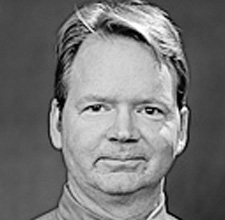

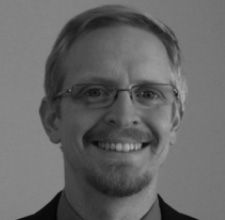
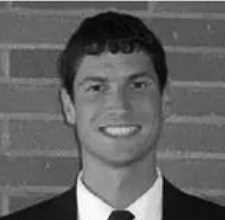
Wednesday, October 22nd | 2:45pm – 3:45pm
This session will involve discussion around the potential changes in Demand Response program design, including the bifurcation of the
program into demand-side management and a supply-side resource, as well as new tools that enable the emergence of location-based and
fast-acting demand response.
Speakers

Jeremy Laundergan
EnerNex
EnerNex

Carl Besaw
Southern California Edison
Southern California Edison

Jonathan Burrows
Pacific Gas and Electric Company
Pacific Gas and Electric Company
Moderator

Matt Smith
San Diego Gas & Electric
San Diego Gas & Electric
Technologies
Demand Response
The Water Challenge: Energy Impacts of Reliable Water Supplies for Farms and Cities
Wednesday, October 22nd | 1:15pm – 2:30pm
Substantial energy is consumed to meet water demands and quality requirements. As changing climate patterns, evolving policies, and increasing
population drive changes to water infrastructure, the energy system is similarly affected. This panel will investigate the impact of economic,
regulatory and technology trends affecting the nexus between large scale water and energy systems.
Distributed Resources Impacting Energy Efficiency and Demand Response
Wednesday, October 22nd | 1:15pm – 2:30pm
This session will explore how distributed resources such as energy storage, distributed generation, and micro-grids are impacting the economics,
development, and adoption of energy efficiency and demand response technologies, as well as program strategies.
“Duck Curve”: The Evolving Statewide Load Profile
Wednesday, October 22nd | 10:45am – 12:00pm
As adoption of Solar Photovoltaic (PV) increases and energy load profiles change and peaks shift, it will be critical to develop and
support programs to help mitigate accelerated ramp-up, potential over generation, and other issues. This session will discuss some
interesting technologies and strategies being explored for this purpose.
Shaping the New Energy Future with Big Data and Connectivity
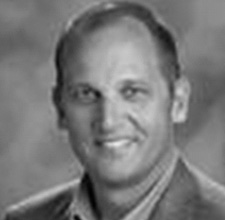
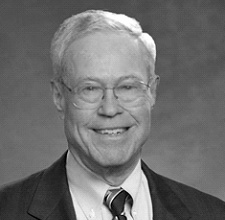


Tuesday, October 21st | 2:45pm – 3:45pm
As sensors and controllers proliferate, data becomes available and new opportunities for influencing energy usage emerge.
This session aims to discuss some potential opportunities around fault detection and diagnostics, feedback to induce behavioral change,
energy management and optimization, and other potential technologies and strategies for energy efficiency and demand response.
Speakers

Dave Roberts
OSIsoft
OSIsoft

Mason Willrich
California ISO Board of Governors
California ISO Board of Governors

Byron Washom
University of California San Diego
University of California San Diego

Natasha Balac
University of California San Diego
University of California San Diego
Technologies
Data Analytics
Next Generation Gas Technologies
Tuesday, October 21st | 1:15pm – 2:30pm
Learn from the natural gas technology leaders about emerging natural gas appliances, equipment
and strategies to deliver deep energy savings. These cleaner and greener solutions will enable
customers to meet energy policy challenges and efficiency standards improvements in the near
future.
Technologies
HVAC
ENERGY SAVINGS THROUGH BEHAVIOR AND DECISION MAKING STRATEGIES

As energy efficiency becomes more difficult to achieve through traditional equipment upgrades, the
energy industry needs to look towards new approaches to driving energy savings. Technology
innovations through big data combined with social science enables both a deeper understanding of
customer behavior and a new generation of opportunities for stakeholders across the energy industry.
This track dives into the next generation of behavior change and associated data analytic tools both
from a program design and savings measurement perspective.
Behavior First: Powering Up Innovation by Putting People at the Center of Program Design and Strategy
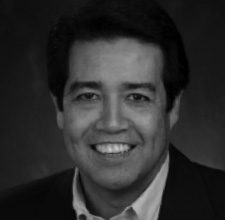
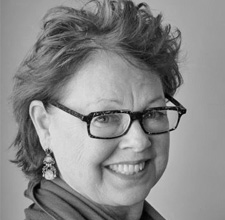
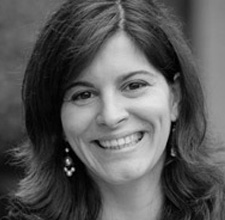
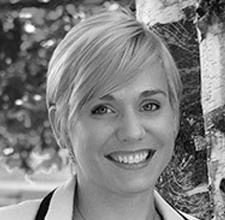
Tuesday, October 21st | 2:45pm – 3:45pm
In this session, we take our machine-focused approach to developing new technologies and turn it on its head. Beginning with the
question: What do we get when we put behavior change at the center of technology adoption, our panelists will each argue and
demonstrate how an emphasis on behavior change can spur innovation and move markets.
Speakers

Gene Rodrigues
ICF International
ICF International

June Flora
Stanford University’s Human Sciences and Technologies Advanced Research Institute (HSTAR)
Stanford University’s Human Sciences and Technologies Advanced Research Institute (HSTAR)

Ines Azevedo
Center for Climate and Energy Decision-Making
Center for Climate and Energy Decision-Making
Moderator

Anne Dougherty
Illume Advising
Illume Advising
Big Ideas in Next Generation Behavior Programs and Tools
Tuesday, October 21st | 4:00pm – 5:15pm
Discover new paradigms in addressing climate change and energy efficiency that couple first-of-their-kind behavior change and large scale
community engagement strategies with enabling technologies and innovation. These approaches move citizens and businesses to take action with
unprecedented results. Hear solutions-oriented approaches and ideas from industry leaders who have pushed the boundaries in human and social
factors and technology.
Technologies
Data Analytics
Leveraging Big Data to Drive Behavior Change

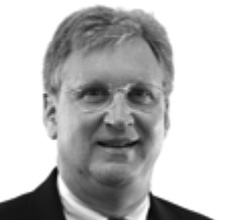

Wednesday, October 22nd | 1:15pm – 2:30pm
Advances in technology and advanced meter infrastructure have opened the door to a new level of data around how customers use energy.
This session explores various cutting edge industry approaches in leveraging this data to drive behavior change with customers through
advanced tools and deeper, more actionable insights.
Speakers

Dave Oberholzer
Earth Networks
Earth Networks

Chris Holmes
Electric Power Research Institute
Electric Power Research Institute

Nikhil Krishnan
C3 Energy
C3 Energy
Technologies
Data Analytics
Gamification for Utilities: Captivating Customers with Energy Information
Tuesday, October 21st | 1:15pm – 2:30pm
What are the principles of gamification and how best to apply them to a utility setting? Captivating customers with their energy
use can be a challenge for utilities. Gamification can be a tool to jump start customers into taking action(s) in managing their
energy consumption. Come find out what new and engaging games are out there in the marketplace.
Behavior Evaluation — Caught Between a Rock and a Hard Place?



Wednesday, October 22nd | 2:45pm - 3:45pm
In this fast-paced world of emerging behavior-enabling energy efficiency technologies, how do we use good evaluation to identify which
technologies truly promise real-world energy savings? This session will highlight the tension between evaluation methods that provide the
high statistical power needed for estimating behavior-effects, and methods more compatible with the realities of opt-in programs, the lack of
comparable control groups, and shorter life cycles of emerging technologies.
Speakers

Annika Todd
Lawrence Berkeley National Laboratory
Lawrence Berkeley National Laboratory

Ken Agnew
DNV GL
DNV GL

Bernie Neenan
Electric Power Resarch Institute
Electric Power Resarch Institute
Technologies
Policy
“Nudging” Customers Toward Energy Efficient Purchasing and Investment Decisions
Wednesday, October 22nd | 10:45am – 11:45am
Behavior-smart widget-based programs work to remove barriers that keep customers from investing in energy efficiency.
Participants will hear from program managers and researchers who have successfully changed the “choice architecture” of purchase decisions,
and leave with a framework for incorporating behavioral science into their own programs.
ENABLING SMARTER ENERGY MANAGEMENT

The availability of energy usage and building data and the proliferation of the “internet of things” have opened up the doors to technologies
and strategies that can enable smarter energy management. This track will focus on trends and opportunities in various analytics software,
sensors, controls and other data collection and data mining technologies that are helping to expand this emerging space.
Connecting Every Node: Networked adaptive lighting control systems and their role in energy management
Wednesday, October 22nd | 2:45pm – 4:00pm
Occupancy, daylighting and temperature sensors integrated into networked lighting control systems monitor and track building energy use and occupancy
patterns, allowing facility managers to maximize the energy efficiency and functional performance of lighting and other building systems, such as heating,
ventilation and air conditioning (HVAC) and building security. The panel will speak to the potential of these “ultra-smart” lighting control systems to
improve energy use in private and open offices, corridors, stairwells, and other spaces throughout office buildings and across entire corporate campuses.
Technologies
Lighting
New Packaged HVAC System Sensors, Logic and Communications….Tons of Potential!
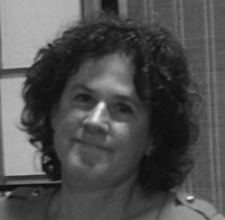
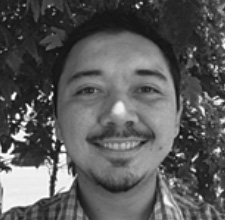

Tuesday, October 21st | 1:15pm – 2:30pm
Low cost, original equipment manufacturers (OEM) retrofit add-on sensors, logic and communications technologies are coming to small and
medium buildings' packaged HVAC and other end-use systems. Energy efficiency, demand response and fault detection and diagnostic (FDD)
functionality, previously the purview of large facility's Energy Management and Control Systems (EMCS) are being made available
for plug and play. Learn how digital sensors and Wi-Fi communications are allowing commercial HVAC and other systems to optimize and adapt
energy use to meet occupancy needs, be remote controlled and monitored for faults.
Speakers

Kristin Heinemeier
Western Cooling Efficiency Center at UC Davis
Western Cooling Efficiency Center at UC Davis

Sean Gouw
Southern California Edison
Southern California Edison

Jerry Scott
Transformative Wave
Transformative Wave
Technologies
HVAC
Internet of Things (IoT) Enabling Smart Efficiency, Comfort and Control
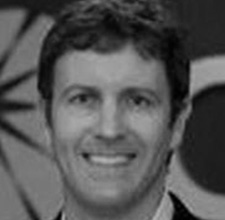
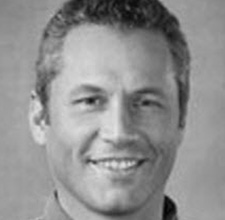

Tuesday, October 21st | 4:00pm – 5:15pm
The exponential growth of convenience devices for consumer comfort - as evidenced at the latest Consumer Electronics Show (CES) - makes
addressing connected plug loads through the IoT (Internet of Things) more important than ever and encompasses a delicate balance of energy
efficiency, demand response, consumer needs and costs. This session will explore the key technologies, new business creation, and what
connected Plug Loads mean for efficiency policy makers, technologists, marketers and utilities.
Speakers

Douglas Johnson
Consumer Electronics Association
Consumer Electronics Association

Bruce Nordman
Lawrence Berkeley National Laboratory
Lawrence Berkeley National Laboratory

Guneet Bedi
JouleX/Cisco EnergyWise
JouleX/Cisco EnergyWise
Welcome to the 21st Century, Gas Gets Smart




Wednesday, October 22nd | 1:15pm – 2:30pm
Technological innovations and new applications are changing the way we use natural gas. From a smarter gas grid, to the latest
business and industrial energy management systems, to new applications for integrated gas technologies - join us as
we discuss what’s new, what’s possible, and why it matters to you.
Speakers

Nancy Carrell Lawrence
Southern California Gas Company
Southern California Gas Company

Todd Amundson
Bonneville Power Authority
Bonneville Power Authority

Jim Reese
California Manufacturing Technology Consulting
California Manufacturing Technology Consulting
Moderator

Ryan Kerr
Gas Technology Institute
Gas Technology Institute
Technologies
Data Analytics
Does "Smart" Translate into Savings? – Trends and Opportunities in Building and Home Automation
Tuesday, October 21st | 4:00pm – 5:15pm
Building and home automation technologies have evolved to include wireless adaptive controls, as well as engendered innovation
in automation software technology. This session will explore the way these technologies achieve energy savings through system
optimization and customer engagement, and discuss how vendors are approaching the residential and SMB markets.
Back to the Future — Thomas Edison or Nikola Tesla?
Wednesday, October 22nd | 2:45pm – 3:45pm
In the past 100+ years, electrical power distribution and use developed with alternating current has been commonly accepted
as the norm. Today however, almost all end uses ultimately operate with direct current (DC) power (lighting, DC motors,
electronics, communications, electric vehicles, etc.). Buildings in the future can safely, reliably, and efficiently operate
with DC power and DC communications. Learn how electrical supply and end use is fundamentally changing - favoring simpler and
reliable DC systems that can be built with available equipment.
Evaporative Cooling and Precooling Technology Advancements - Are We Ready for Prime Time?
Wednesday, October 22nd | 10:45am – 12:00pm
Some argue that far less water could be used to cool buildings than used by utilities making electricity. Considering evaporative
cooling or precooling technologies poses a considerable opportunity for energy load reduction. In the West’s hot and dry climates,
there is significant customer energy efficiency potential using evaporative cooling technologies for air cooled chillers, HVAC
and refrigerant condensers and air intake systems. Hear about the latest improvements in this technology and decide for yourself,
is it ready for prime time?
ACHIEVING DEEPER ENERGY SAVINGS THROUGH INTEGRATED SOLUTIONS

What role do integrated solutions play in moving beyond “low-hanging fruit” toward smarter buildings and deeper savings?
This track will highlight successful integrated solutions that span both sides of the meter across the entire value chain of stakeholders,
including technology developers, emerging technologies, end-users and utility programs.
New Research Approaches: Delivering Integrated Solutions for Future Market Needs


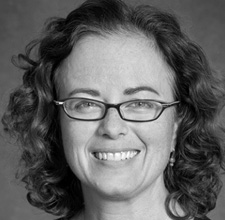

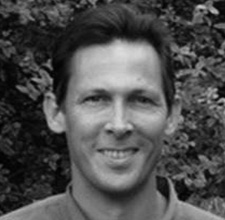
Wednesday, October 22nd | 2:45pm – 4:00pm
How can we successfully test and validate holistic solutions in laboratory or field research settings, and better plan
research to accelerate technology adoption? Lab research is traditionally designed to test components rather than whole
systems. But today's energy efficiency infrastructure increasingly requires integrated solutions. This session will present
recent advances in test environments and research design that will help manufacturers, program delivery staff and researchers
to innovate across the innovation pipeline, from labs of the future to cutting-edge field test approaches to integrated RD&D program design.
Speakers

G.P. Li
Calit2
Calit2

Mark Modera
Western Cooling Efficiency Center at UC Davis
Western Cooling Efficiency Center at UC Davis

Cindy Regnier
Lawrence Berkeley National Laboratory
Lawrence Berkeley National Laboratory

Sarah Widder
Pacific Northwest National Laboratory
Pacific Northwest National Laboratory
Moderator

Eric Werling
Department of Energy
Department of Energy
Impact of Distributed Generation & Storage on Zero Net Energy (ZNE)
Tuesday, October 21st | 2:45pm – 3:45pm
Above and beyond deep energy efficiency, this session looks at challenges and successful demonstrations of integrating of
energy storage, renewables and other distributed generation sources, demand response and permanent load shifting to maintain a
resilient supply-side and customer-side infrastructure to promote ZNE.
Beyond the Occupant Scapegoat

Tuesday, October 21st | 2:45pm – 3:45pm
Energy consumption in new homes can vary as much as fivefold. This is typically blamed on occupants – conveniently (but incorrectly) exonerating building
professionals. We will introduce smart, simple, integrated design and construction strategies calculated to curb occupants’ energy use.
Moderator

Ann Edminster
DesignAvenues LLC
DesignAvenues LLC
Successful Integrated Solutions & Lessons Learned

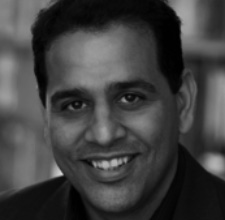
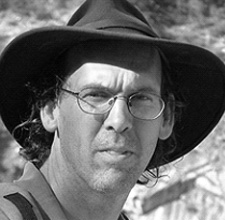
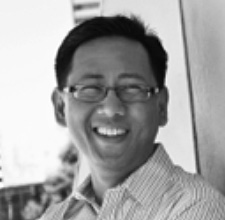

Tuesday, October 21st | 4:00pm – 5:15pm
What have we learned from early engagement with design team and owners about costs, constructability, and performance as we
march onward to high performance buildings? Using California’s ZNE mandate as an example, we will explore a mix of innovative
technologies and solutions that offer a potential trifecta increase in affordability, efficiency and comfort.
Speakers

Peter Turnbull
Pacific Gas and Electric Company
Pacific Gas and Electric Company

Porus Antia
Stantec Consulting, Inc.
Stantec Consulting, Inc.

Neal DeSnoo
City of Berkeley
City of Berkeley

Gerard Lee
Harley Ellis Devereaux
Harley Ellis Devereaux
Moderator

Cathy Higgins
New Buildings Institute
New Buildings Institute
Technologies
Zero Net Energy
Role of Community Level Integration to Achieving High Performance Buildings


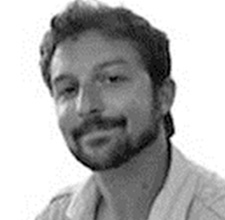

Tuesday, October 21st | 2:45pm – 3:45pm
Unlike individually metered homes, community level ZNE offers even greater opportunities for better management of
distributed resources and helps with intermittency of renewable resources. This session will explore how to tie together
high performance buildings and leverage innovative technologies like energy storage and renewables to evaluate impacts on
local distribution systems.
Speakers

Ram Narayanamurthy
Electric Power Research Institute
Electric Power Research Institute

William Goetzler
Navigant Consulting, Inc.
Navigant Consulting, Inc.

Blake Herrschaft
DNV GL
DNV GL
Moderator

John Morton
Southern California Edison
Southern California Edison
The Sum is Greater than the Parts: Whole Building Solutions

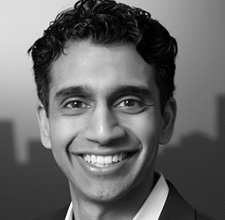



Wednesday, October 22nd | 10:45am - 12:00pm
With increasing availability of energy usage interval data from smart meters and low-cost sensors,
energy efficiency program sponsors are positioned to reinvent the way they quantify and even incentivize
energy savings through whole building programs that can be more cost-efficient and effective at capturing
interactive effects and operational savings than conventional upgrade program offerings. Realizing this potential,
however, may require innovation of software modeling tools as well as program design and regulatory frameworks.
This session will explore new and improved approaches to effectively design, implement and verify solutions that deliver
savings at the whole facility, program portfolio and grid level. It will also explore conditions necessary to achieve scale in
California and the rest of the U.S.
Speakers

Leo Carrillo
Pacific Gas and Electric Company
Pacific Gas and Electric Company

Indy Ratnathicam
FirstFuel
FirstFuel

Chris Burmester
Energy Solutions
Energy Solutions

Tristam Coffin
Whole Foods
Whole Foods

Lindsey Puchyr
PJM Emerging Markets
PJM Emerging Markets
Technologies
Data Analytics
Program by Technology
The ET Summit will take a comprehensive view of energy efficiency
and demand response in order to accelerate innovation and adoption
of emerging technologies. Topics such as behavior, customer engagement strategies
and policy are relevant regardless of the lens through which participants
look at this industry, however illustrated below is a more technology-based
lens by which you can plan your ET Summit experience!
Sessions
Connecting Every Node: Networked adaptive lighting control systems and their role in energy management
Wednesday | 2:45PM
New Research Approaches: Delivering Integrated Solutions for Future Market Needs
Wednesday | 2:45PM
It Works, Now What? Innovative Approaches for Accelerating Market Transformation
Wednesday | 2:45PM
Does "Smart" Translate into Savings? – Trends and Opportunities in Building and Home Automation
Tuesday | 4:00PM
Sessions
New packaged HVAC system sensors, logic & communications…tons of potential!
Tuesday | 1:15PM
Evaporative Cooling and Precooling Technology Advancements - Are we Ready for Prime Time?
Wednesday | 10:45AM
New Research Approaches: Delivering Integrated Solutions for Future Market Needs
Wednesday | 2:45PM
It Works, Now What? Innovative Approaches for Accelerating Market Transformation
Wednesday | 2:45PM
Sessions
Connecting Every Node: Networked adaptive lighting control systems and their role in energy management
Wednesday | 2:45PM
Does "Smart" Translate into Savings? – Trends and Opportunities in Building and Home Automation
Tuesday | 4:00PM
Sessions
Role of Community Level Integration to Achieving High Performance Buildings
Tuesday | 2:45PM
New Research Approaches: Delivering Integrated Solutions for Future Market Needs
Wednesday | 2:45PM
Sessions
Role of Community Level Integration to Achieving High Performance Buildings
Tuesday | 2:45PM
Does "Smart" Translate into Savings? – Trends and Opportunities in Building and Home Automation
Tuesday | 4:00PM
Sessions
The Water Challenge: Energy Impacts of Reliable Water Supplies for Farms & Cities
Wednesday | 1:15PM
Evaporative Cooling and Precooling Technology Advancements - Are we Ready for Prime Time?
Wednesday | 10:45AM
Sessions
Let’s just put it in code... Understanding Risks and benefits of leapfrogging to Codes & Standards
Tuesday | 4:00PM
It Works, Now What? Innovative Approaches for Accelerating Market Transformation
Wednesday | 2:45PM
Sessions
Who’s on First? Understanding the players and their roles in helping ET Transition
Tuesday | 2:45PM
Move Faster!... Be Patient! Move Faster!... Be Patient!... VCs and ET Programs Meet in the Middle
Wednesday | 1:15PM
It Works, Now What? Innovative Approaches for Accelerating Market Transformation
Wednesday | 2:45PM
Informal Session
CEC Informal Session: California's Energy Efficiency Research - What's Possible?
Monday, October 20th4:00PM - 5:00PM
Parc 55 Hotel - Balboa
This informal session will highlight new technologies and insights developed in the California Energy Commission's research program. Learn about funding opportunities for your innovative ideas. Find out how to sign up for upcoming events, workshops, notices and more...
Tour Information

- PARC provides custom R&D services, technology, expertise, best practices and intellectual property to large companies, startups and governmental agencies and partners.
- Learn about recent PARC innovations such as printing technologies that boost the storage capacity of batteries by 30%, a breakthrough fuel cell technology that can burn hydrocarbons at 250C, and adaptive energy control to reduce energy consumption in data centers by up to 30%.

- Visit UC Davis’ world-renowned research and development facilities, the California Lighting Technology Center (CLTC) and the Western Cooling Efficiency Center (WCEC) and see how each are advancing technologies and policy in the lighting and HVAC industries. Both the CLTC and WCEC have full-scale laboratories and you’ll be able to see demonstrations of current and emerging technologies poised to reduce the energy used in homes and businesses.
- Get the chance to visit the West Village, the largest planned zero net energy community in the United States, as well as the Honda Smart Home that showcases technologies that enable ZNE living and transportation.


- Take a hands-on lab tour and learn how the FSTC energy experts help commercial foodservice customers such as restaurants and hotel kitchens, reduce energy and water use while increasing productivity and improving their position in a hyper-competitive marketplace.
- Live demonstrations let you see and taste the benefits of efficient cooking equipment by sampling French Fries from the Fryer Challenge and building your own sundae at the soft serve ice cream bar.


- FLEXLAB is DOE’s newest building technologies testing facility providing full-service integrated design research for commercial buildings on an entirely customizable, configurable platform.
- Hear about LBNL’s expertise in simulation, operations and tool development and the research opportunities that leverage FLEXLAB to provide game changing research and assessment of emerging technologies, as well as validation of design and operational tools.

If you’re interested in attending any of these tours, please RSVP when you register


Exploratorium
The 2014 ET Summit is thrilled to host its Opening Night Reception at San
Francisco’s Exploratorium on Monday, October 20th. Don’t miss this unique
opportunity to network with industry and thought leaders while admiring stunning
views of the Bay and interacting with light, sound and living materials exhibits via
our exclusive access to the East and Central Galleries.
True to the experimental spirit of the Exploratorium–and the nature of net-zero – achieving such an ambitious degree of energy-efficiency will require continued monitoring and tinkering over time. Visitors to the museum can view live energy use and photovoltaic production on public display in a real-time educational exhibit in the museum’s lobby.
“This project combines an effort to both innovate and think critically about the impact science can have on the world. Our net-zero goal is, in part, a way to reduce our global footprint and help improve the community we’ve been a part of for more than 40 years,” says Dennis Bartels, Ph.D., Executive Director of the Exploratorium. “Net-zero is a process – and an opportunity for the public to learn with us.”
5,874 high-efficiency solar panels on the Exploratorium’s roof offset 33,150 tons of carbon dioxide emissions over the 30-year life of the system. The solar panel system has the capacity to generate enough power to provide energy to more than 1,000 average American homes each year and is equivalent to removing 5,910 cars from California’s highways.
Water conservation was built into the very bones of the Exploratorium, both in its facilities and in its day-to-day practices. A rainwater-harvesting system captures rainwater and then stores, filters, and uses it for flushing toilets. Water-efficient plumbing includes sinks with low-flow, sensor-operated faucets; waterless urinals in the men’s bathrooms; and toilets equipped with dual-flush handles. Together, these innovations are designed to reduce the Exploratorium’s water usage by 60% in a year of average rainfall.
The building’s bay water heating and cooling system eliminates the need for a cooling tower, which saves 2,000,000 gallons of water that would otherwise be lost to evaporation every year. The Exploratorium’s beautiful waterfront campus also has no landscaping, and thus no lawns or outdoor plants to water.
About the Exploratorium
When San Francisco’s Exploratorium opened its new home at Pier 15 in April 2013, it did so with the ambitious goal to eventually become the largest net-zero energy use museum in the U.S., if not the world. Now, just a year later, the world’s most experimental museum is well on its way toward that goal. In January 2014, the Exploratorium was awarded LEED® Platinum certification by the U.S. Green Building Council, another key step on the museum’s path toward net-zero.True to the experimental spirit of the Exploratorium–and the nature of net-zero – achieving such an ambitious degree of energy-efficiency will require continued monitoring and tinkering over time. Visitors to the museum can view live energy use and photovoltaic production on public display in a real-time educational exhibit in the museum’s lobby.
“This project combines an effort to both innovate and think critically about the impact science can have on the world. Our net-zero goal is, in part, a way to reduce our global footprint and help improve the community we’ve been a part of for more than 40 years,” says Dennis Bartels, Ph.D., Executive Director of the Exploratorium. “Net-zero is a process – and an opportunity for the public to learn with us.”
5,874 high-efficiency solar panels on the Exploratorium’s roof offset 33,150 tons of carbon dioxide emissions over the 30-year life of the system. The solar panel system has the capacity to generate enough power to provide energy to more than 1,000 average American homes each year and is equivalent to removing 5,910 cars from California’s highways.
Water conservation was built into the very bones of the Exploratorium, both in its facilities and in its day-to-day practices. A rainwater-harvesting system captures rainwater and then stores, filters, and uses it for flushing toilets. Water-efficient plumbing includes sinks with low-flow, sensor-operated faucets; waterless urinals in the men’s bathrooms; and toilets equipped with dual-flush handles. Together, these innovations are designed to reduce the Exploratorium’s water usage by 60% in a year of average rainfall.
The building’s bay water heating and cooling system eliminates the need for a cooling tower, which saves 2,000,000 gallons of water that would otherwise be lost to evaporation every year. The Exploratorium’s beautiful waterfront campus also has no landscaping, and thus no lawns or outdoor plants to water.







